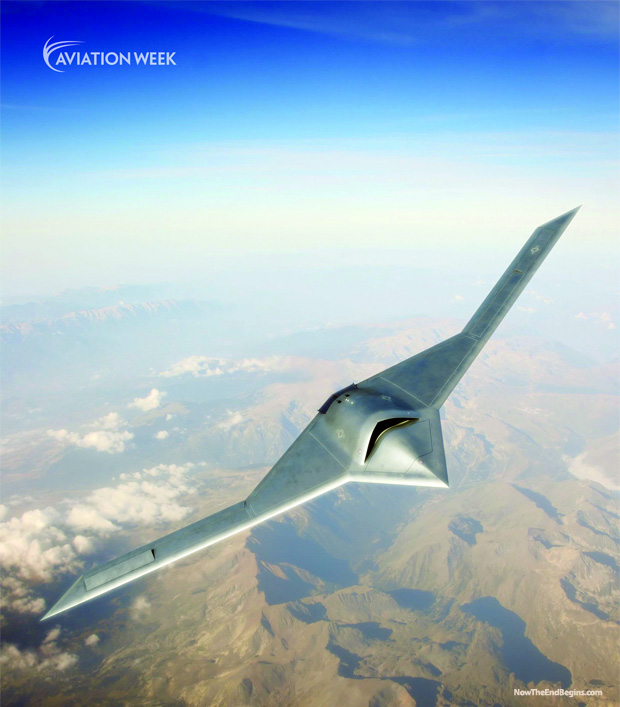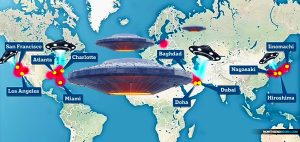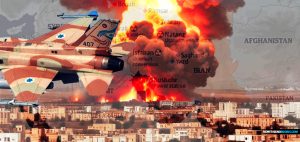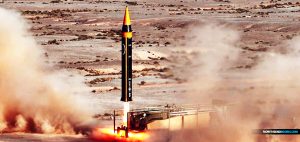Drones
New Global Arms Race Use Weapons Directed By Robots
Governments are developing weapons that rely on artificial intelligence, not human instruction, to decide what to target and whom to kill.
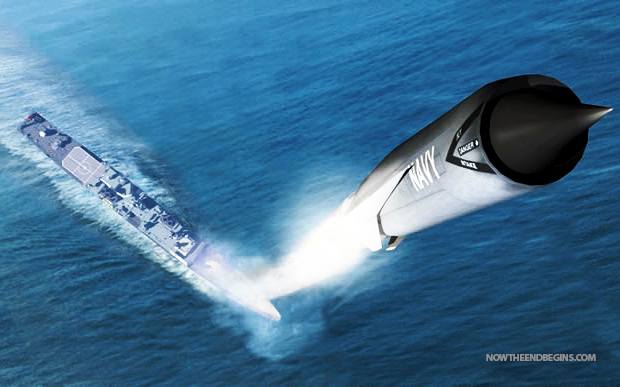
On a bright fall day last year off the coast of Southern California, an Air Force B-1 bomber launched an experimental missile that may herald the future of warfare
Initially, pilots aboard the plane directed the missile, but halfway to its destination, it severed communication with its operators. Alone, without human oversight, the missile decided which of three ships to attack, dropping to just above the sea surface and striking a 260-foot unmanned freighter.

“It will be operating autonomously when it searches for the enemy fleet,” said Mark A. Gubrud, a physicist and a member of the International Committee for Robot Arms Control, and an early critic of so-called smart weapons. “This is pretty sophisticated stuff that I would call artificial intelligence outside human control.”
Warfare is increasingly guided by software. Today, armed drones can be operated by remote pilots peering into video screens thousands of miles from the battlefield. But now, some scientists say, arms makers have crossed into troubling territory: They are developing weapons that rely on artificial intelligence, not human instruction, to decide what to target and whom to kill.
Britain, Israel and Norway are already deploying missiles and drones that carry out attacks against enemy radar, tanks or ships without direct human control. After launch, so-called autonomous weapons rely on artificial intelligence and sensors to select targets and to initiate an attack.
Britain’s “fire and forget” Brimstone missiles, for example, can distinguish among tanks and cars and buses without human assistance, and can hunt targets in a predesignated region without oversight. The Brimstones also communicate with one another, sharing their targets.

DARPA
The Ultra-Lethal Secret ‘Black’ Drones Being Built At Area 51
The Pentagon has openly funded work on unmanned combat aircraft, including Northrop Grumman’s X-47, a diamond-shaped drone that can take off and land from aircraft carriers. But aerospace watchers have long presumed that these programs are hiding even more secretive work.
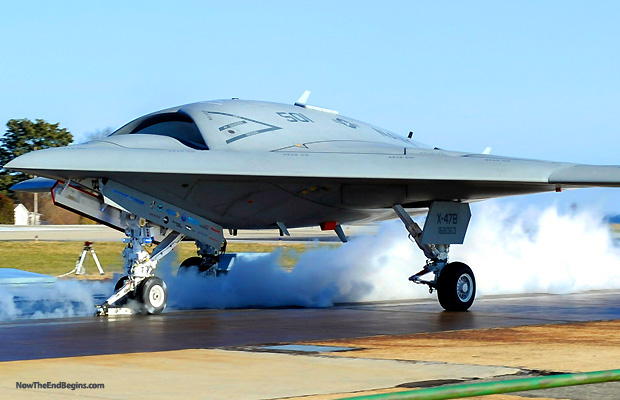
The Future Of Drones From The Defense Advanced Research Projects Agency
In 13 short years, killer drones have gone from being exotic military technology featured primarily in the pages of specialized aviation magazines to a phenomenon of popular culture, splashed across daily newspapers and fictionalized in film and television, including the new season of “24.”

Satellite pictures emerged showing new construction at Area 51, the Pentagon’s top-secret testing area in the Nevada desert. Veteran watchers of “black,” or secret, aircraft, immediately suspected that the Pentagon was preparing to test a new secret aircraft, and the most likely candidate was a stealth drone.
What has not changed all that much — at least superficially — is the basic aircraft that most people associate with drone warfare: the armed Predator. The Predator, with its distinctive bubble near the nose and sensor ball underneath, is the iconic image of drone warfare, an aircraft that grew out of 1980’s work supported by the Pentagon’s future-thinking Defense Advanced Research Projects Agency.
Originally developed to perform surveillance, the CIA added Hellfire missiles and began using the Predator to hunt down members of the Taliban and al Qaeda after the US invasion of Afghanistan in 2001. Though the CIA and Air Force now fly an updated version of the Predator — named Reaper — the drone is still relatively easy to detect, and easy to shoot down, at least for a country with a modern military.
Under development is a new generation of drones that will be able to penetrate the air defenses of even sophisticated nations, spotting nuclear facilities, and tracking down — and possibly killing — terrorist leaders, silently from high altitudes. These drones will be fast, stealthy and survivable, designed to sneak in and out of a country without ever being spotted.
In 2007, satellite pictures emerged showing new construction at Area 51, the Pentagon’s top-secret testing area in the Nevada desert. Veteran watchers of “black,” or secret, aircraft, immediately suspected that the Pentagon was preparing to test a new secret aircraft, and the most likely candidate was a stealth drone.
Now, two unmanned spy drones are under development. One that appears almost ready for combat is the RQ-180, a stealthy spy drone built by Northrop Grumman. Though the Pentagon refuses to confirm its existence, Aviation Week & Space Technology ran this artist’s concept earlier this year and revealed a little about its rumored design.
The RQ-180 is designed to fly very high, for a very long time (perhaps as long as 24 hours). According to Aviation Week, it has a 130-foot wing span and a “cranked kite” stealthy design that would allow it to slip past enemy radar. Chances are it will only be used for surveillance, not attack, though it could carry out an electronic attack.
Another, recently revealed project is a high-altitude drone being developed by Lockheed Martin that can travel up to six times of the speed of sound. The drone would be both a spy and strike aircraft, according to Lockheed. But the SR-72, as Lockheed is calling the twin-engine aircraft, wouldn’t be ready to fly until 2030.
The original Predator was essentially a surveillance aircraft that was turned into an armed drone, so any future replacement aircraft would likely look very different. The Pentagon has openly funded work on unmanned combat aircraft, including Northrop Grumman’s X-47, a diamond-shaped drone that can take off and land from aircraft carriers. But aerospace watchers have long presumed that these programs are hiding even more secretive work. source – NY Post
Barack Hussein Obama
Iran Unveils New High-Tech Drone Based On Obama’s ‘Gift’ In 2011
Iran has unveiled its own copy of an American stealth drone it captured in late 2011, claiming to have cracked the “secrets” of the bat-wing craft and added weapons capabilities.
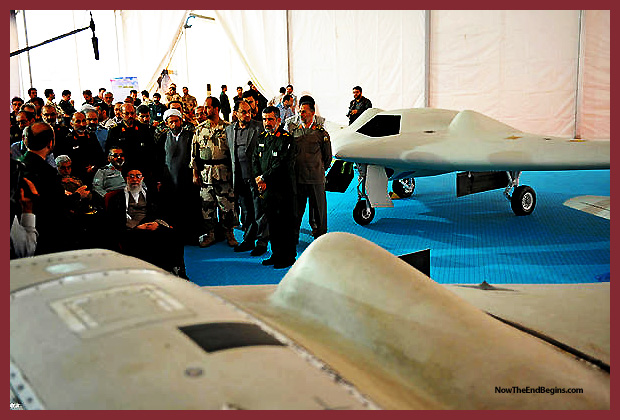
This Is The Drone That Obama Let Them Have Back In 2011
Question Of The Day: When this drone was “captured” by Iran back in 2011, Obama could have immediately order that it be remotely destroyed through satellite and stealth technology so Iran could not have used it. So why didn’t he?
Iran has unveiled its own copy of an American stealth drone it captured in late 2011, claiming to have cracked the “secrets” of the bat-wing craft and added weapons capabilities. Today, Fars News Agency reported that while Iran’s duplicate of the US RQ-170 Sentinel drone was smaller, it also had a “bombing capability to attack the US warships in any possible battle.” The story in Persian was headlined: “America’s nightmare has become reality.” State television showed footage on Sunday it said was of a US aircraft carrier in the Persian Gulf filmed by an Iranian drone.

What’s the best way to give Iran top-secret American drone technology to use against Israel? Let Iran “capture” one as it falls from the sky, and then make no effort to get it back.
The drone replica was unveiled at an Islamic Revolutionary Guard Corps (IRGC) exhibition on Sunday, where Supreme Leader Ayatollah Ali Khamenei was briefed on how the drone, its systems, and structure had been reverse-engineered. He called it a “sweet day.”
The stealth replica would “soon take a test flight,” an IRGC officer said on Sunday. Aerospace chief Amir Ali Hajizadeh said today that they are working on two more models of the replica drone.
Proving its prowess
Engineers with the IRGC were ordered to reverse engineer the captured US drone, which was on a CIA mission to spy on nuclear and military sites in Iran when it was brought down in Iran largely intact. Iran reacted with euphoria, trumpeting the capture in an “electronic ambush” showed Iran’s technical prowess.
“And thus the Iranian-RQ [project] was designated,” said an IRGC aerospace officer, according to Fars News. “To achieve this, considering the difficulties and flight dynamics, we designed a bird with a smaller size that would be cheaper and simpler, and that we have done now. We have done ground tests already, and after this fair, we will do air tests too.”
“Here we didn’t know what type of information we were looking for. There was an issue of encoding and passwords, which thanks to God’s help we have overcome,” said the officer. He said data included video and advanced imaging and was “completely recovered.”
US officials said Iran was incapable of replicating the drone’s sophisticated radar-evading skin and shape, its aerodynamics, and top-of-the-line surveillance equipment, though it might be able to do so with the help of Russia or China. Iran has often made claims of cutting-edge military advances that later did not prove accurate, and it is not clear today what capabilities the replica has.
Khamenei said the lesson of the exhibition – which included unveiling a new cruise missile called “Ya Ali” with a 700 km range, among other new military hardware – was to show that Iranian engineers are capable.
“[It] gives the message of our internal power and capabilities … and declares that: ‘We can’,” said Khamenei. source – CS Monitor
Barack Hussein Obama
Russia Intercepts US Drone UAV MQ-5B Flying Over Crimea
A United States surveillance drone has been intercepted above the Ukranian region of Crimea, a Russian state arms and technology group said Friday.
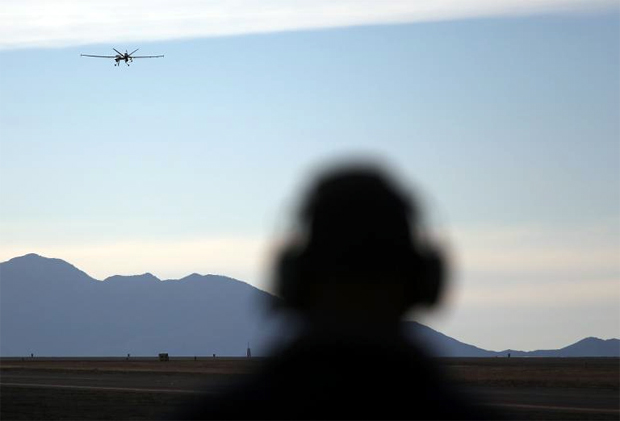
Moscow (AFP) – A United States surveillance drone has been intercepted above the Ukranian region of Crimea, a Russian state arms and technology group said Friday.
“The drone was flying at about 4,000 metres (12,000 feet) and was virtually invisible from the ground. It was possible to break the link with US operators with complex radio-electronic” technology, said Rostec in a statement.
“The drone fell “almost intact into the hands of self-defence forces” added Rostec, which said it had manufactured the equipment used to down the aircraft, but did not specify who was operating it.
“Judging by its identification number, UAV MQ-5B belonged to the 66th American Reconnaissance Brigade, based in Bavaria,” Rostec said on its website, which also carried a picture of what it said was the captured drone.
The photograph appeared to show an apparently armed drone in flight, rather than debris. The Crimean port of Sevastopol is home to Russia’s Black Sea Fleet, which is believed to be equipped with detection equipment.
Crimea, where pro-Kremlin forces have control, is to hold a referendum on Sunday on the peninsula joining Russia, in what Moscow says is a fair expression of self identity but the West views as an illegal annexation of sovereign territory. source – Yahoo News
-

 George Soros7 years ago
George Soros7 years agoProof Of George Soros Nazi Past Finally Comes To Light With Discovery Of Forgotten Interview
-

 Election 20167 years ago
Election 20167 years agoDEAD POOL DIVA: Huma Abedin Kept Those Hillary Emails That The FBI Found In A Folder Marked ‘Life Insurance’
-

 Election 20167 years ago
Election 20167 years agoCrooked Hillary Campaign Used A Green Screen At Today’s Low Turnout Rally In Coconut Creek FL
-

 George Soros7 years ago
George Soros7 years agoSORE LOSER: George Soros Declares War On America As Violent MoveOn.Org Protests Fill The Streets
-

 Donald Trump7 years ago
Donald Trump7 years agoDonald Trump Will Be 70 Years, 7 Months And 7 Days Old On First Full Day In Office As President
-

 Headline News7 years ago
Headline News7 years agoIf Hillary Is Not Guilty, Then Why Are Her Supporters Asking Obama To Pardon Her? Hmm…
-

 Election 20167 years ago
Election 20167 years agoWikiLeaks Shows George Soros Controlling Vote With 16 States Using SmartMatic Voting Machines
-

 End Times7 years ago
End Times7 years agoFalse Teacher Beth Moore Endorses The Late Term Partial-Birth Abortion Candidate Crooked Hillary









